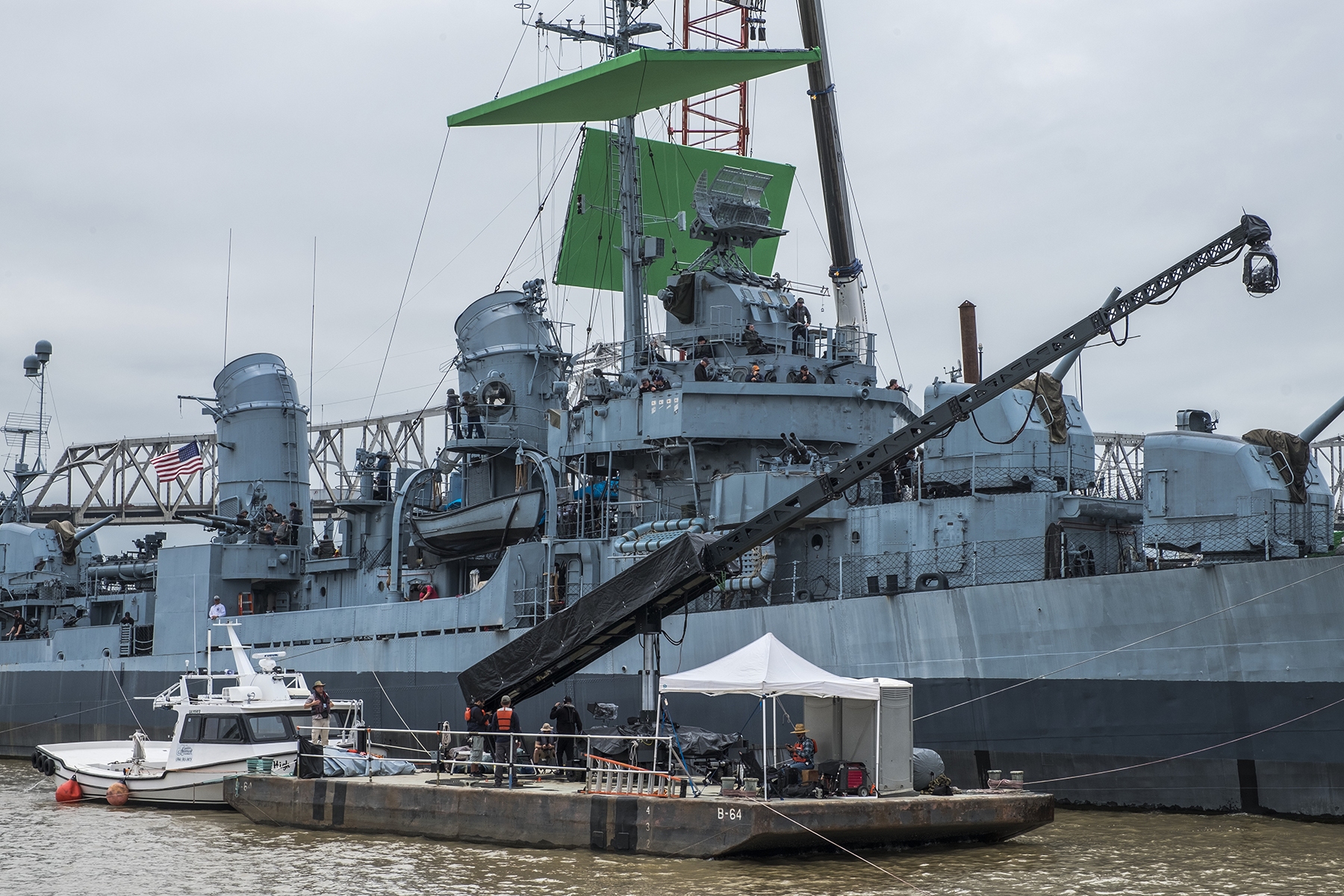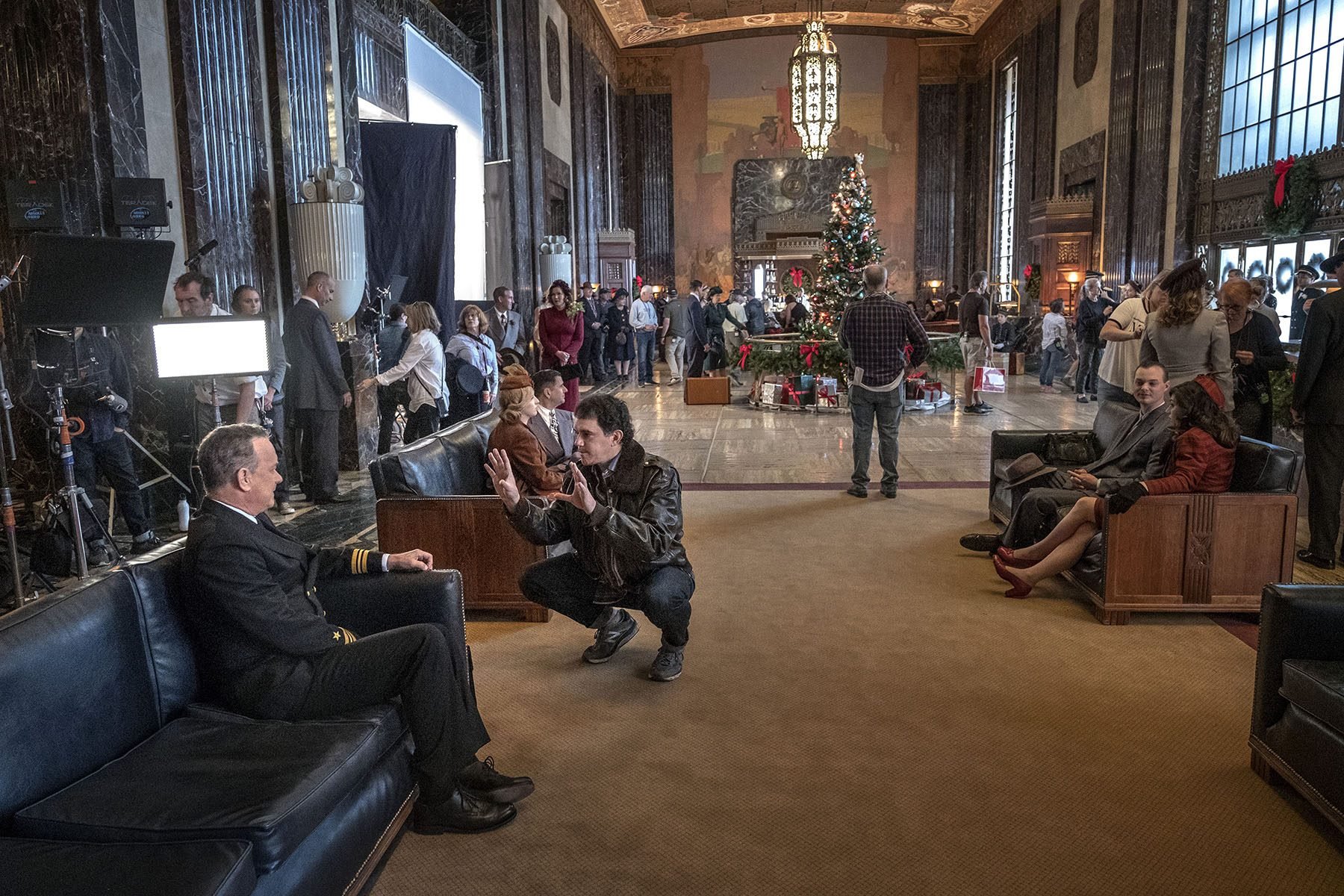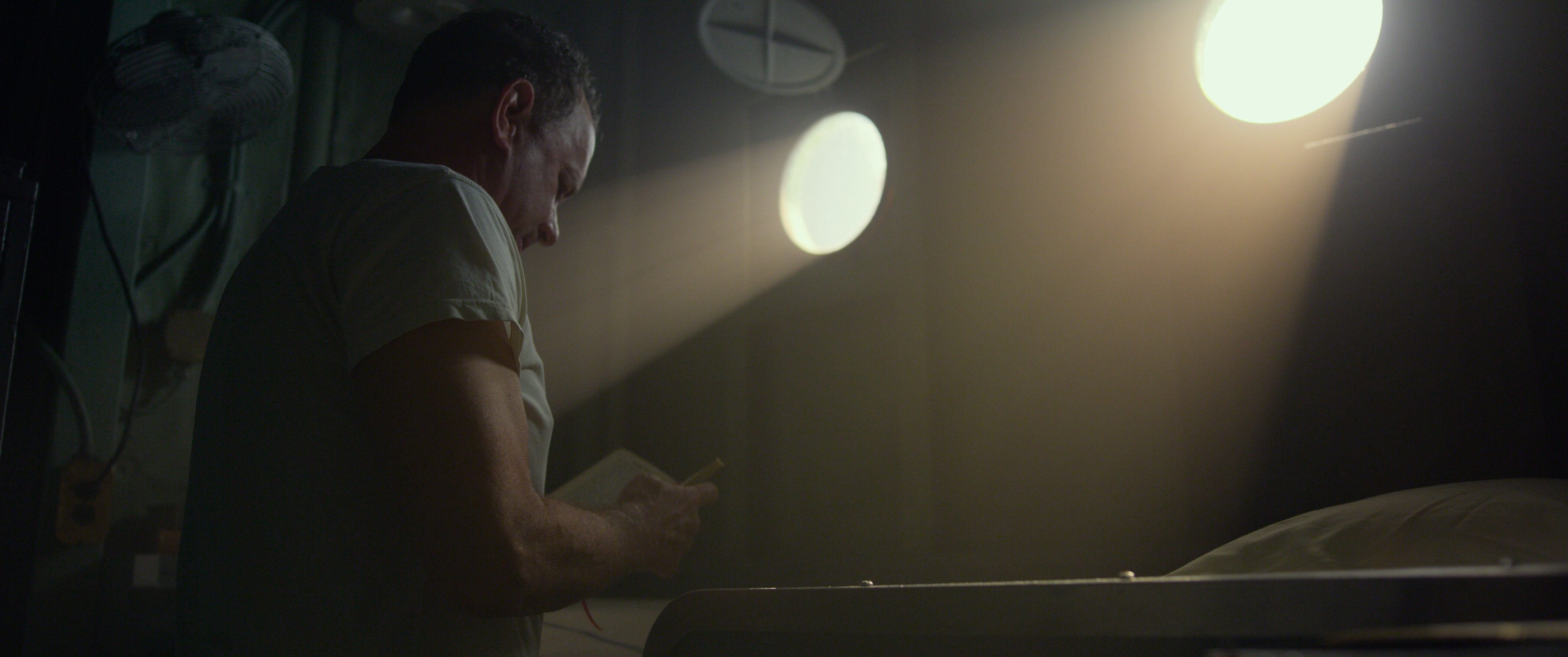All Videos
Clubhouse Conversations — Greyhound
Interviewer Eric Steelberg, ASC talks to director Aaron Schneider, ASC and cinematographer Shelly Johnson, ASC about their taut World War II adventure drama, now streaming on Apple TV Plus.

With a screenplay by Tom Hanks (seen above with Schneider), adapted from the 1955 novel The Good Shepherd by English writer C. S. Forester (also the author of the Horatio Hornblower book series), Greyhound is set in the Mid Atlantic and stars Hanks as an inexperienced U.S. commander coordinating the cat-and-mouse battle between his U.S. destroyer — and the convoy he is assigned to protect alongside other Allied warships — and a ruthless “wolf pack” of multiple German U-boats.
Johnson checks a close-up on Hanks:

The production was heavily dependent upon complex visual effects to bring its open-ocean combat sequences to life, calling for the filmmakers to deliver live-action material that not only offered emotional and dramatic authenticity, but would mesh perfectly with the CGI work to be done in post.
The picture was photographed with the Panavision DXL (Dragon sensor), which was dictated by the desire to employ optics that would facilitate close-proximity photography — Sphero 65 lenses — and maintaining a compact package while working in tight quarters within their destroyer set.


In the video, the filmmakers discuss their creative approach project — working from Hanks’ screenplay — and the need for very close collaboration between production and post to bring the picture’s ferocious oceanic combat action to the screen. “The script was a cinematographer’s dream,” says Schneider.
“I liked the fact that a large part of the script had to be depicted visually, largely through camera performance, because the camera had to be a participant,” Johnson confirms.
Portions of the film were shot aboard the World War II-era destroyer USS Kidd — permanently docked along the Mississippi River as a museum in Baton Rouge, Louisiana — and at sea in the North Atlantic aboard the Royal Canadian Navy frigate HMCS Montréal, stationed in Halifax, Canada.
The filmmakers simulated the effect of the static, 376-foot USS Kidd cruising across the Atlantic by utilizing telescopic cranes to maneuver their camera around the moored vessel. Schneider was in part inspired by the motion-control approach to shooting model spaceships (specifically the Millennium Falcon) pioneered while the creating effects for Star Wars (1977) — as executed by ASC members John Dykstra, Richard Edlund and Dennis Muren.


A State-side scene featuring Hanks and actress Elisabeth Shue was photographed at Celtic Studios in Baton Rouge. The warm light and rich colors contrast with the cold, slate-gray color palette employed in the convoy and combat scenes. Below, Schneider (crouching) confers with Hanks:

A native of Springfield, Illinois, Schneider built his career as a cinematographer after graduating from USC, shooting a multitude of music videos before getting his break to shoot narrative projects. Recommended by actor/director Charles Haid, his first major credit was producer Steven Bochco’s ABC series Murder One in 1996, for which Schneider earned Emmy and two consecutive ASC Award nominations. He would soon move into features, shooting the thriller Kiss the Girls and the period drama Simon Birch, while also photographing TV projects including the pilots for the series Supernatural, C-16: FBI, Buddy Faro and The Agency. He would also do second-unit work for Russell Carpenter, ASC on Titanic
Schneider became a member of the ASC in 1999 and later became interested in directing, resulting in the short film Two Soldiers (2003; photographed by David Boyd, ASC), for which he earned an Academy Award. He subsequently directed and edited the fantastical period feature Get Low (2009; also shot by Boyd), starring Robert Duvall, Bill Murray and Sissy Spacek.
Schneider's path to becoming a director was discussed in this AC blog post.



Johnson is a California native and graduated from the Art Center College of Design in 1980. Inspired in part by the camera crews his father worked with as a television director, Johnson focused on cinematography, soon establishing himself with an impressive and diverse array of television series, movies and miniseries, including the 1997 retelling of Stephen King's The Shining. He was nominated for ASC Awards for his work in the telefilms Everybody's Baby: The Rescue of Jessica McClure (1990) and The Inheritance (1997), as well as the series The Others (2000). Johnson parlayed this success into the feature film realm, with his credits including Jurassic Park III, The Last Castle, Hidalgo, Sky High, The Expendables 2 and Percy Jackson: Sea of Monsters.
American Cinematographer published feature stories on his work in The Wolfman (AC Feb. 2010) and Captain America: The First Avenger (AC Aug. '11).




A native of Los Angeles, Steelberg’s upcoming 2021 supernatural comedy Ghostbusters: Afterlife is the cinematographer’s eighth feature film collaboration with director Jason Reitman, following The Front Runner; Tully; Men, Women & Children; Labor Day; Young Adult; Up In the Air and Juno. His other credits include 500 Days of Summer, Baywatch and the period biopic Dolemite Is My Name.


You'll find our complete production article on the project here.







